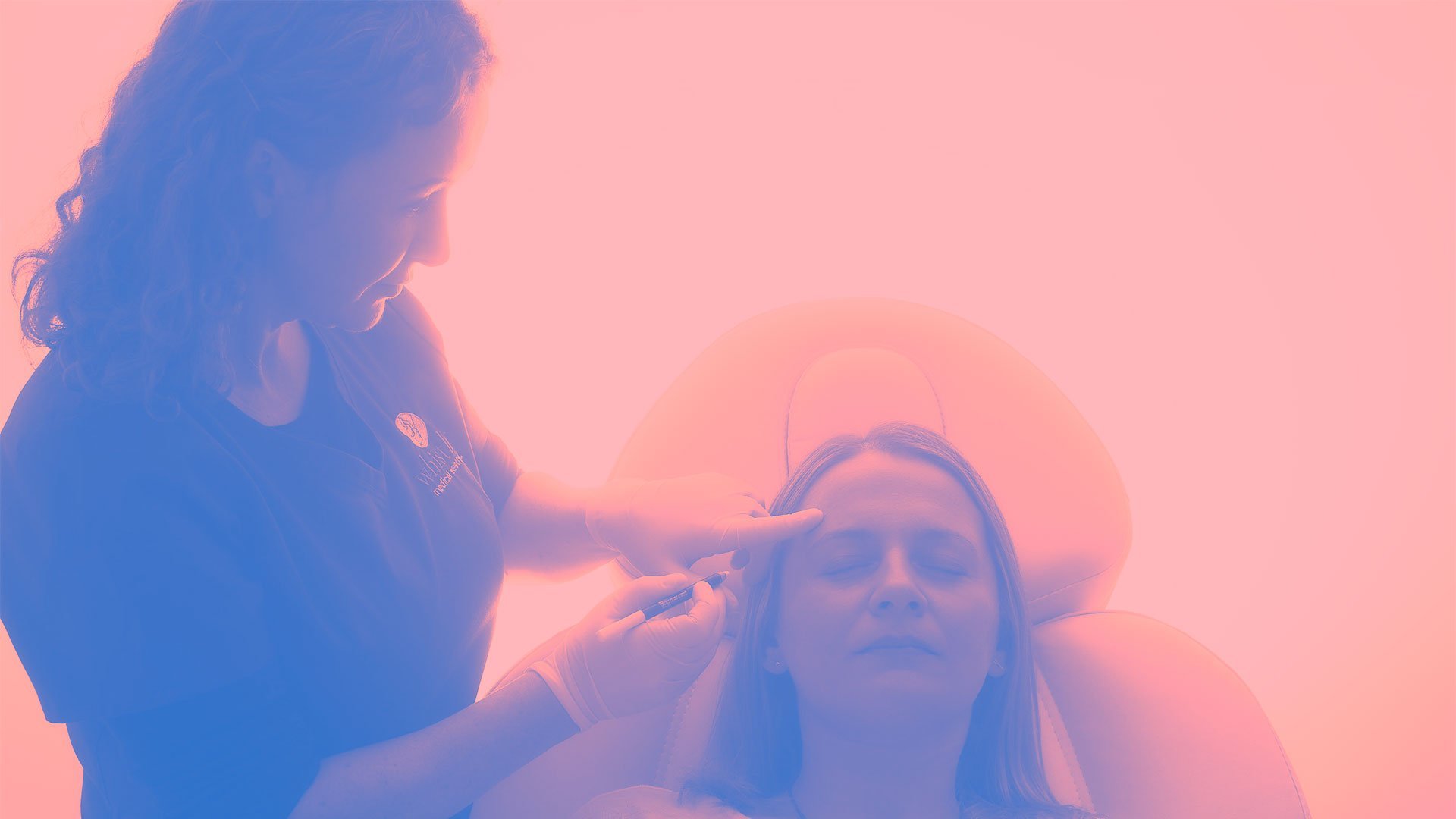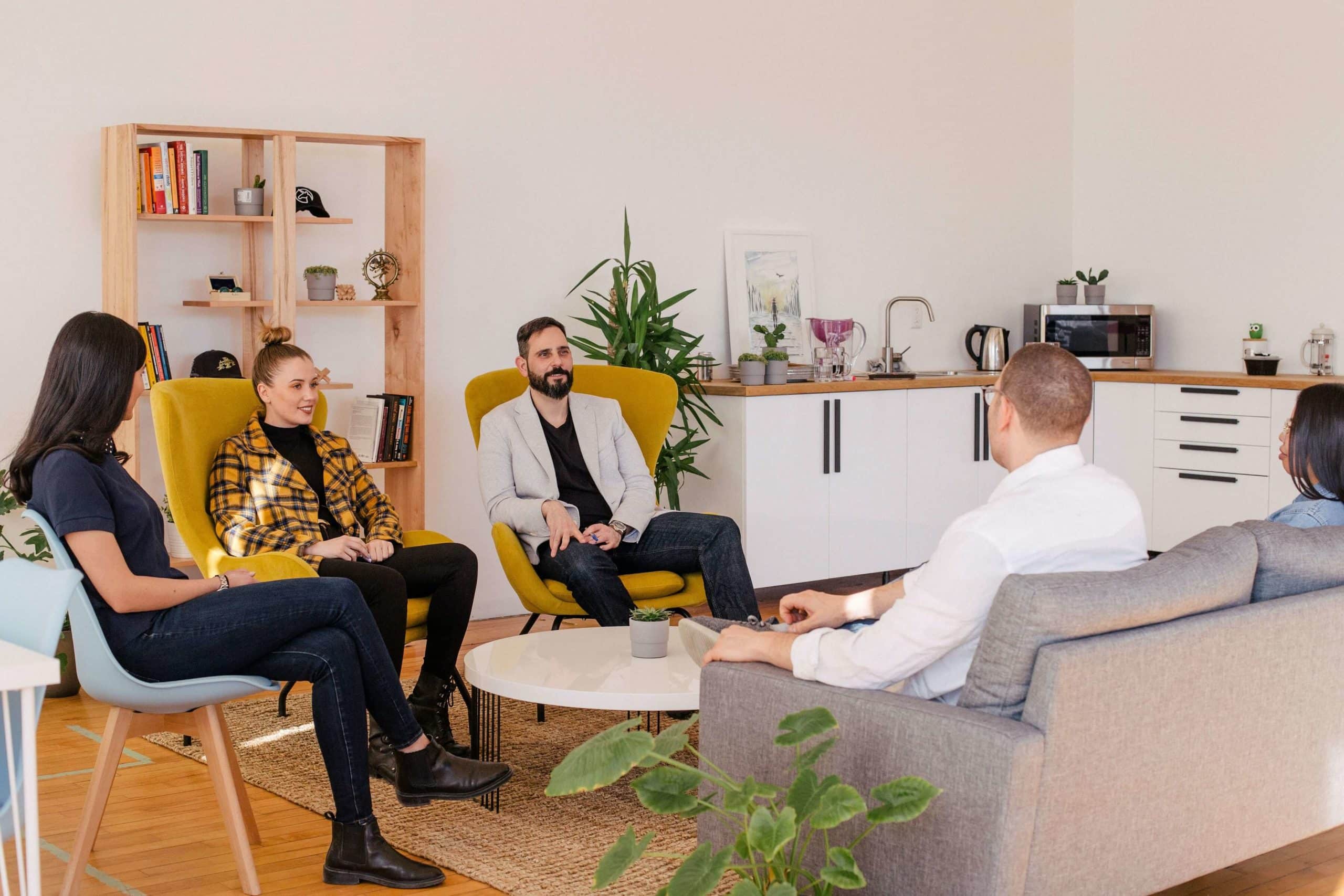As a digital marketer, the “Customer Journey” isn’t anything new.
But sometimes, going back to basics helps us evaluate what we know, but also identify opportunities we might have missed before!
Plus, Google introduced the concept of “micro-moments” back in 2015:
Their stance disrupts the fact that the customer journey isn’t just rigidly confined to the existing stages and that marketers should be paying attention to all facets.
Here is the general structure of the Customer Journey:
The importance of understanding which stages your consumers are at, meeting them there, and them to convert (again and again).
We will be looking at each stage of the customer journey, which advertising channels work best for each, and how Google’s Micro-Moments connect them all!
PS. If you’re a travel or tourism marketer, you should check out our Guide to Travel Customer Journey!
COVID-19’s Impact on the Customer Journey in Marketing & Consumer Trends in 2023
It’s important to note that consumer trends have changed since the COVID-19 pandemic. Due to previous lockdown orders, many people have reduced their impulse purchases and prioritized buying essentials instead. With so many businesses closed, there was a huge shift online. eMarketer notes that global e-Commerce grew by 27.6% in 2020!
Google shared some trends in July 2021 on consumer shopping behavior. Here are the main takeaways:
- An average increase of 56% of people saying they plan to buy Consumer Packaged Goods online. However, 66% plan to begin shopping in-store.
- Finance Industry: When it comes to personal finance, such as banking and insurance, more than 70% of people still consider speaking to a customer representative in person to be more helpful.
- 1 in 4 consumers reported pain points in their online customer journey, such as payment issues, lack of customer support, or availability.
Brands should identify the pain points their consumers face and provide pro-active and solid customer support post-purchase. Businesses must deliver an exceptional online customer experience consistently.
For additional reading, here is Google’s report, “The Journey Reshaped: COVID’s Impact on the Path to Purchase”.
Now, as we’re 3 years after the initial COVID pandemic in 2023, there are some new statistics about customer service. Lawnstarter shares in their report:
- The global customer experience management industry was worth $11.34 billion in 2022
- The global customer service satisfaction rate is 77%
- 70% of consumers are eager to spend more money with companies that deliver positive customer experiences
- 90% of customers will splurge with companies that personalize customer service
The takeaway is that the more a brand invests in creating a better customer experience, the more likely the customer is to purchase more and stay loyal. And you can incorporate this into your digital marketing strategy!
Marketing job opportunities are plentiful for skilled professionals adept at developing customized strategies for each stage, increasing brand loyalty and boosting conversions, as a result of the growing trend toward personalized customer journeys.
Without further ado, let’s jump into the first stage of the Customer Journey!
Customer Journey Stage #1: Awareness
Awareness is the very first step a person takes when embarking on the Customer Journey. The customer is aware that they have a problem or need and are looking for a solution. It’s the first time they meet your brand, making sure your brand and offerings are clear and make a strong impression.
Potential customers come across you through discovery. It could be paid advertising campaigns, content, (eg. blogs, infographics, pins on Pinterest), or even an ad they heard through a podcast!
So, ask yourself:
“When will my consumer become aware of offerings like mine?”
“How will my consumer become aware of my company and its offerings?“
Advertising channels that are great for generating brand awareness include:
- Social Ads
- Influencers on Social Media
- Audio Ads
- Display Ads
- Video Ads
- Social Display Ads (a hybrid!)
Customer Journey Stage #2: Consideration
This stage is where the customer conducts research on what products or services are available on the market to resolve their problem or fulfill their need. They are shopping around and will narrow their options down to their top choices.
It’s where you prove that you care and that you are the absolute best option.
Customers will search online to learn more about your products and services, conduct price comparisons amongst you and your competitors, and read customer reviews.
Research shows that a consumer will visit, on average, three websites before making a purchase. Plus, the more sites one visits means the more money they’re probably going to spend.
At this stage, it’s essential to cover your grounds digitally.
Paid Search on popular search engines should be the foundation of any marketing strategy in the Consideration Stage.
Aside from search advertising, companies should work on their organic search, which can be improved with rich blog content and Search Engine Optimization.
Here are some questions brands can ask themselves to see if you’re covering enough ground:
- My offerings: are they clear and understandable?
- Did I properly highlight the benefits?
- Is my unique value proposition clearly defined?
- Is my price point competitive enough against those brands similar to mine?
- Can people find my website and brand easily online?
Have thorough information on your website about your products to get a leg-up from your competition! Plus, this is where customers are likely to contact you for more information, so ensure you’ve made contacting your business as easy as possible!
If your campaign objective is lead generation, ensure that your landing page is effective.
- PPC Search Ads
- Social Media Ads (Lead Generation especially)
- Video Ads
Customer Journey Stage #3: Conversion
Have you ever find yourself browsing Netflix, not knowing what to watch, even though you had a few movies on your watch list you’d like to watch someday? That’s like customers too. There are so many enticing options out there, and thankfully you’ve made it to their top list.
This stage is where the customer makes up their mind on which option they’re going for. By now, the customer is 95% sure which company will be the best fit for their needs.
There are certain tools that help businesses gain valuable insights to solidify that decision. These solutions empower companies to understand customer preferences and behaviors, ensuring they are the preferred choice for their needs.
Here is where you can give them a final push (or gentle nudge)!
Ask yourself:
“When will my consumer be ready to make a purchase?”
“How do I convince my consumer to buy my product/service?”
Customer reviews can come in handy, but don’t forget to get video testimonials from customers as well.
If you’ve got it, flaunt it! Client testimonials, case study videos…these can all attest to how great you are.
This tip is a given, but sharing social proof (aka 5-star client reviews) on social, landing pages, and on your website has always been good practice! Let them sell you on your behalf!
Do note that the Consideration and Decision stage time can vary depending on the product, price, or individual.
Funnel those that have visited your website or filled out a form into a new audience segment. Personalize the message to address their pain points and further convince them you are “The One.”
Best channels to help customers make the decision:
- PPC Search Ads
- Retargeting Ads on Social
- Display Ads
The result of an effective marketing strategy? Your audience officially becomes a customer by converting, completing a purchase, or whatever your goal was. Hurray!
But if you think the customer journey has ended, you are mistaken, it is the beginning 2.0!
Customer Journey Stage #4: Retention
Congratulations, your prospect has officially become a customer!
It was a lot of work turning them into a first-time buyers, so now you’ve gained their trust, you gotta work hard on maintaining it.
Here are some statistics you shouldn’t overlook when it comes to your existing customer base:
- Retaining an existing customer is 5x cheaper than acquiring a new one.
- Customers are 9 times more likely to convert again after they already purchased from you.
- A repeat customer spends an average of 33% more than a new customer.
Keep your customers in the loop with your company and latest offerings through social media and your newsletter. Brands can increase customer engagement by implementing personalized SMS marketing to deliver timely updates and exclusive offers directly to mobile devices.
You should also follow up on getting feedback from your consumers. Reviews and testimonials help build trust for your brand. Many brands offer incentives for consumers when they leave a review or refer a friend. You can also offer discounts, promos on certain products at different times throughout the year. VIP or exclusive sales for existing customers are a great way to keep them engaged.
You have to continuously work on keeping your brand at peoples’ top of mind and create a need for them before they even realize it!
When it comes to paid advertising, these are good channels to utilize and retarget your existing customer base:
- Display Ads
- Social Ads
- Over-The-Top (OTT) Ads
- Social Display Ads
- Youtube Survey Ads
- Video Ads
- Email Marketing (newsletter, abandoned shopping cart, seasonal promotions etc)
Customer Journey Stage #5: Advocacy
When your brand, ad, and actual product or service align and can achieve what you said it would (for example, making your consumers’ life better), you create a positive customer experience.
Great reviews could convince potential customers to pull the trigger and convert in the Conversion stage. Building off the Retention stage, your existing customer base (which will continue to grow) is invaluable. Word-of-Mouth referrals are priceless and happy customers translate to raving fans. See where we’re going? So, take the time and effort to foster relationships with your customer base!
Use brand reputation management tools like Google My Business or Capterra (for SaaS companies) to make a good first impression. 93% of consumers agree that online reviews can influence their purchase decisions.
Aside from collecting reviews, also consider consistently putting out relevant content. You can promote them on social with ads. Your existing follower base probably already enjoys your content, but they can also share it with their friends and family online. Social amplification is a powerful thing!
There you go, now you know the five stages in the Customer Journey!
Let’s move on to Micro-Moments.
Micro-Moments
As seen in the video clip above, there are so many nuanced micro-moments unique for everyone, but Google pinpoints four that you should note down that are universal.
Want-To-Know moments: When someone conducts research to find information, not necessarily to make a purchase.
Want-To-Go moments: A person is looking for a location, like a hotel or a restaurant.
Want-To-Buy moments: When someone plans to buy something but is looking for suggestions as to what to buy or how to buy it (eg. is it out of stock online, if so, which store to go to buy it).
Want-To-Do moments: A person wants to try something new or is seeking assistance to complete a task.
For these crucial moments, it’s important for you as a brand to be there for your consumers in need! Identify where, when, and how your consumers are researching — a target persona would be helpful in this case.
1. Be present and relevant for each moment. For example, in the “Want-To-Know” moment, running a Google PPC search campaign would be a great way to capture top-of-the-funnel users. You can leverage Google Search Console or a tool like AnswerThePublic to find out what terms people are looking for. Then, gear your campaign and keywords to match them, so you capture them at the right place and time!
2. That’s not all; you need to ensure your landing page is highly relevant to what they’re searching for.
3. If they’re ready to make a purchase, simplify the process as much as you can (the fewer clicks, the better)!
4. Utilize analytical tools to track website visitor behavior and collect audience data to continue optimizing your website and content.
5. It can be time-consuming and sometimes overwhelming to juggle Facebook, Google, Instagram, Youtube etc, ads at once. Plus, what do you make of the data? Consider partnering with an advertising agency that offers cross-channel advertising. Take War Room, for example; their programmatic platform, Kedet consolidates all of your advertising channels into one single ecosystem. The data you collect is no longer separated but instead, speak to each other! What you get are cleaner data and lower ad costs. How? Let’s say a customer converted through your Google Search Ad. They can then exclude them from seeing your Display Ads and Social Ads, saving you ad dollars! Leveraging ad tech to advertise smarter is the future.
Figure out if you need a partner: “Do I Need a Marketing or Advertising Agency?”
The most valuable channels to address these moments include: search and video.
By interconnecting all these moments with your customer journey, you can truly provide your audience with a highly personalized and enriched experience that will drive engagement and conversions!
It’s essential to put effort into creating a mobile-friendly experience for your audience. Here are some statistics to convince you:
- 90% of smartphone users don’t know which brand they want to buy from when searching for information. This means lots of consumers aren’t brand-committed.
- 67% of users say they’re more likely to purchase a product or service if you have a mobile-friendly site.
- Over 50% of smartphone users discover new brands or products when researching on their mobile phones. So by establishing a mobile presence, you are expanding your reach!
- Website and landing page:
- Fast loading (did you know your conversions drop by 12% every second there is a delay?)
- Use multi-media content such as graphics or videos to complement your text content.
- Consider Call-To-Action (CTAs) to collect First-Party Data (get them to sign up for your newsletter to get a discount code). You can then use their email to run retargeting campaigns in the future.
- Youtube is the second biggest search engine. Have you ever gone on it to look up how to cook a particular recipe or how to fix your washing machine? Maybe you end up not cooking the dish or hiring a plumber to fix it for you, but many brands are creating video content for consumers to learn about their product and how it works.
Bonus: The BELT Method
Facebook expert Curt Maly created the BELT method for Facebook Ads. It tracks the user from a prospect to a buyer.
It was created to have better audience reach and lowering ad costs.
Based on the audiences’ personality profiles, you need to target them differently with specific ad copy or imagery.
Facebook recommends for advertisers to:
- Create separate campaigns with different objectives to reach different audience segments.
- Utilize all three options for audience targeting: core audiences, custom audiences, and lookalike audiences.
- Capture more audiences by running retargeting ads targeting your website visitors and video viewers.
BELT is the acronym for: Belief, Engage, Lead, and Transact.
Belief: This is the equivalent to the “Awareness” stage. You need to create a content marketing strategy that appeals to your consumers. You can then measure engagement. You can set ad objectives for brand awareness, reach, video view, or even post engagement.
Engage: Position yourself as the best option for your audience. You can do this by entertaining and educating them. You want to build trust amongst your audience in this stage. These campaign objectives might work well: video views, post engagement, and landing page clicks.
Lead: Your goal for this stage is to generate website traffic and leads. A landing page would typically accompany this with an objective of website conversions or lead generation.
Transact: At last, the “Conversion” stage! Your audiences by now would have visited your landing page, website, or even put an item in their online shopping cart. Now you have to retarget them and close the sale! These prospects are ready to pay, so you should run conversion-driven Facebook ads: product catalog sales, store visits, click-to-website, and website conversions.
Conclusion
In conclusion, a well-thought-out customer journey that incorporates micro-moments will ensure you reach audiences at every stage. Build your brand credibility and leverage different ad types to target different audience segments. You’ll reach relevant people, get your message out there, and convince them to take action!
Connect with us to learn how our advanced cross-channel advertising services!
Grow Your ROI with Cross-Chanel Advertising
Say hello to customized advertising strategies that convert.
Get in touch with our programmatic experts today!











